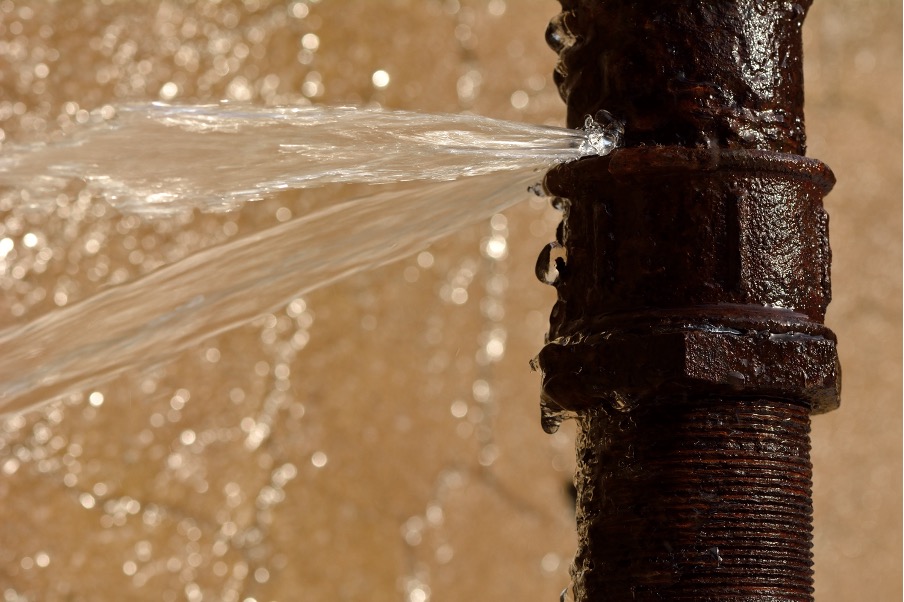Exactly how to Discover and Repair Water Leaks-- A Comprehensive Guide
Exactly how to Discover and Repair Water Leaks-- A Comprehensive Guide
Blog Article
The writer is making several great pointers regarding Detecting hidden plumbing leaks overall in this post underneath.

Early discovery of leaking water lines can alleviate a prospective calamity. In addition to saving you cash, it will minimize the worry and irritation. The minute you find a leakage, calling your plumber for repair services is the very best solution. However, some tiny water leaks may not be visible. If you can not detect it with your naked eyes, right here are some hacks that help.
1. Examine the Water Meter
Checking it is a proven way that aids you uncover leaks. If it moves, that shows a fast-moving leak. This suggests you may have a sluggish leakage that could also be below ground.
2. Check Water Usage
Examine your water bills and track your water intake. As the one paying it, you ought to see if there are any type of inconsistencies. If you identify sudden changes, regardless of your consumption coinciding, it suggests that you have leaks in your plumbing system. Keep in mind, your water costs must fall under the same array on a monthly basis. An abrupt spike in your costs indicates a fast-moving leakage.
A stable increase every month, also with the same behaviors, reveals you have a slow leak that's additionally gradually escalating. Call a plumber to thoroughly check your building, especially if you feel a cozy area on your floor with piping underneath.
3. Do a Food Coloring Test
When it comes to water intake, 30% originates from toilets. Test to see if they are running correctly. Drop specks of food shade in the container and wait 10 mins. If the color in some way infiltrates your dish throughout that time without flushing, there's a leak between the tank and bowl.
4. Asses Outside Lines
Don't forget to inspect your outdoor water lines as well. Ought to water seep out of the link, you have a loose rubber gasket. One tiny leakage can squander loads of water and spike your water bill.
5. Examine and Assess the Scenario
Home owners need to make it a behavior to examine under the sink counters as well as even inside cabinets for any type of bad odor or mold and mildew development. These two warnings suggest a leak so timely interest is needed. Doing regular assessments, even bi-annually, can conserve you from a major trouble.
Check for discolorations and compromising as many home appliances and pipes have a life expectancy. If you presume dripping water lines in your plumbing system, do not wait for it to rise.
Early detection of leaking water lines can alleviate a possible catastrophe. Some little water leakages might not be noticeable. Checking it is a guaranteed means that helps you uncover leakages. One tiny leak can throw away tons of water and also spike your water costs.
If you think dripping water lines in your plumbing system, don't wait for it to escalate.
How to Know If Your Home Has a Hidden Leak
Water Meter Reveals Inexplicable Water Usage
If you’d like to test whether or not there’s a leak somewhere in your home, you can do this using your water meter. Here is how to conduct the test:
Don’t use any water in your home for at least 30 minutes; this also means not turning on faucets or water-using appliances.
Go outside, and check your water meter for activity.
If your water meter shows that there was activity, even though no one was using any water, this proves that there is a leak in your home.Visible Mold or Mildew Growth
Leaks behind walls create moist, dark environments that allow mold and mildew to grow and thrive. Eventually, you might see mold growth forming on the wall closest to a hidden leak.
If mold is growing in an area that receives a high amount of moisture, such as a bathroom, it may simply be an indication that better ventilation is needed. However, if you see mold growth on a wall or the ceiling in an area where you would not expect, you probably have a hidden leak.
Musty, Mildew Odor
Sometimes you might not be able to see the mold or mildew that is growing as a result of a leak. However, the smell can give the problem away just as easily. If you catch a whiff of something musty, there’s a good chance that old water is collecting somewhere in your home that you can’t see.
Stained/Warped Walls, Ceilings, or Floors
When your home soaks up water, a variety of red flags can become visible, including ceiling stains, bubbling drywall, warped walls, and sagging floors. While these issues can be caused by excess humidity, they can also be signs that a pipe or plumbing connection has started leaking behind your walls.
Inexplicably High Water Bill
After a while, you get a general sense for what your water bill should be. If you own a pool or sprinkler system, your bill will tend to be higher during summer. However, if you receive a water bill that seems especially high, and you can’t figure out what caused it, then you may have a hidden leak somewhere that’s increasing your bill.
https://www.plumbingjoint.com/blog/2019/july/how-to-know-if-your-home-has-a-hidden-leak/

As an avid person who reads on Hacks to detect leaks, I imagined sharing that segment was a great idea. If you please take the opportunity to share this blog if you appreciated it. Thank you for going through it.
Report this page